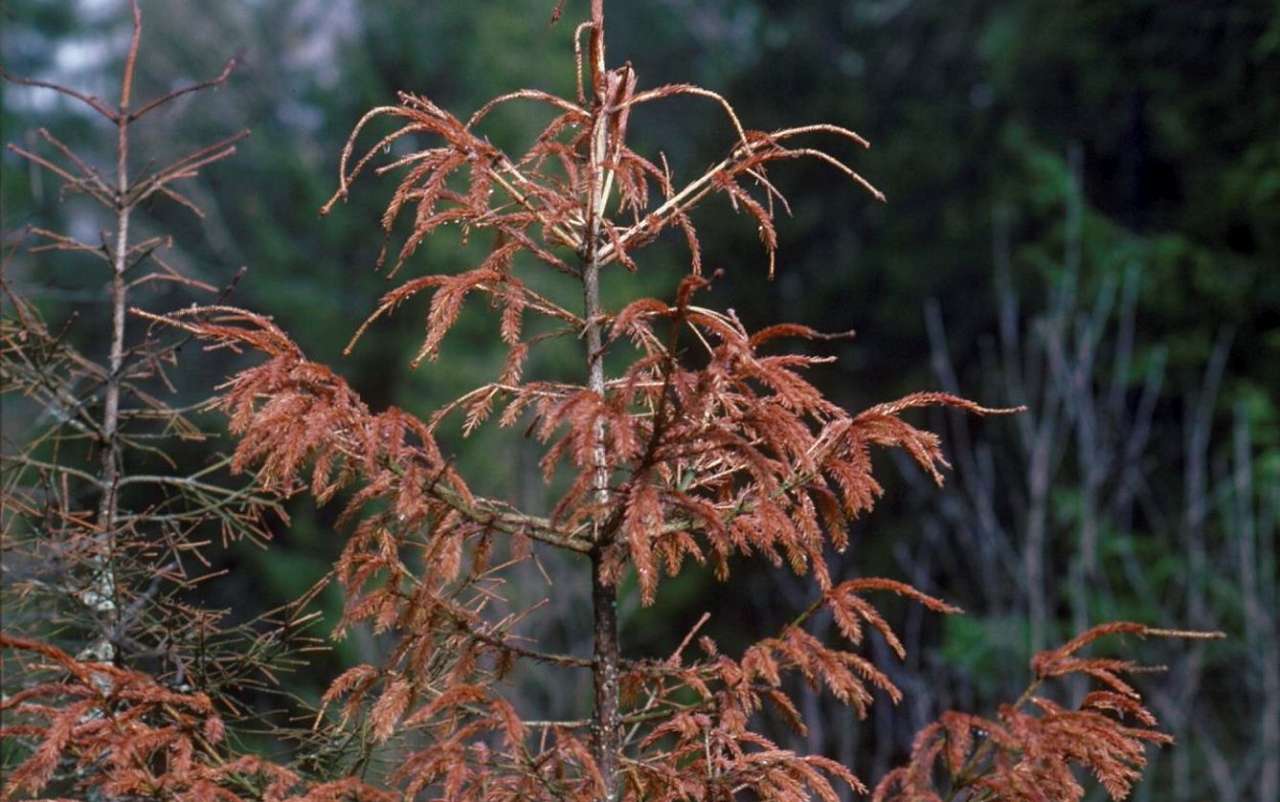Norway spruce particularly susceptible to drought stress

Photo: Dan Aamlid.
Long-term droughts reduce growth and carbon sequestration in forests. The trees also lose some of their ability to withstand attacks from fungi and insects.
“In the summer of 2018 we recorded significant damage in forests, particularly to Norway spruce. The first symptom of drought damage is weak growth in the top of the tree. Then the needles at the top turn yellow, and finally the top dries out. If the trees use up more water than they take in from precipitation, they can become susceptible to drought stress,” says Isabella Børja, senior researcher in the Division of Biotechnology and Plant Health at NIBIO.
She explains that drought stress is also connected to the terrain where the trees are growing, how much water each tree has access to, and how efficiently the trees utilise the water. As part of a previous project, Børja identified how much drought stress the Norway spruce can tolerate.
“We found that individual Norway spruce trees react to drought stress differently. Trees with more loosely connected tissue structures are more likely to have problems with water flow in their trunks. This results in dry tops and dying off from the top”, Børja continues.
If a Norway spruce suffers from drought damage, this will first become apparent in the crown, where the needles turn yellow and fall off. But by that point the roots may have already sustained damage. If the roots are damaged, the trees become less capable of withstanding fungi such as pine root rot and honey fungus. Particularly vulnerable to drought damage are the fine roots responsible for water absorption, found in the top eight inches of the soil. This damage happens more quickly in spruce than in pine trees, which have deeper roots.
Drought also impact on the forest’s capacity to sequester carbon.
“Carbon sequestration occurs both above and below ground. Above ground this is in the form of plant growth. Less growth results in less sequestered carbon,” says Børja.
She explains that below ground the storage of carbon is driven by mycorrhiza, the association between fungi and plant roots.
“In dry conditions, this association is impaired and the storage of carbon is reduced,” Børja concludes
Contacts

Contacts

